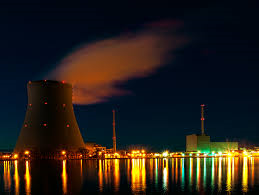
Advances In Engineering (AIE) has featured one of the Texas A&M Energy Institute’s faculty affiliate’s research articles on its website – Stoutenborough, James W., Shelbi Sturgess, and Arnold Vedlitz, 2013, “Knowledge, Risk, and Policy Support: Public Perceptions of Nuclear Power” Energy Policy 62: 176-184.
This article, from the 2012 national energy policy survey that the Texas A&M Energy Institute and the Crisman Institute for Petroleum Research helped fund, was selected by AIE as a key scientific article contributing to excellence in engineering scientific and industrial research. AIE aims to inform academic and industrial R&D scientists of innovative papers.
Article Abstract
“Knowledge, Risk, and Policy Support: Public Perceptions of Nuclear Power”
Nuclear energy was becoming increasingly popular as an alternative to air polluting fossil fuel technologies through the latter half of the 2000s. The tragic events of March 11, 2011 in Fukushima, Japan appear to have instantly killed any momentum the nuclear industry had gained. While unfortunate, many argue that nuclear power is still a safe alternative and that the Fukushima disaster resulted from insufficient safety regulations in Japan, a problem that does not exist in the United States. This project examines U.S. public support for nuclear energy one year after the Fukushima tragedy, seeking to understand the influence of knowledge and risk perceptions on policy support. We evaluate public support for nuclear energy policy from several perspectives using risk and attitudinal measurements that are more specific than often found in the literature to obtain a greater understanding of the connection between policy and risk.
Acknowledgement
This material is based upon research conducted by the Institute for Science, Technology and Public Policy in The Bush School of Government and Public Service, Texas A&M University in cooperation with the Texas A&M Energy Institute. The research was supported by Texas A&M University’s Crisman Institute for Petroleum Research in the Harold Vance Department of Petroleum Engineering, the Institute for Science, Technology and Public Policy in the Bush School, and the Office of the Vice President for Research.
